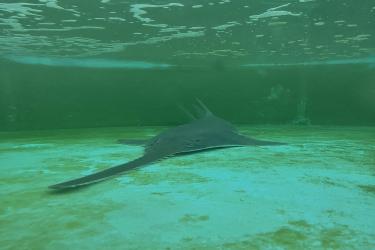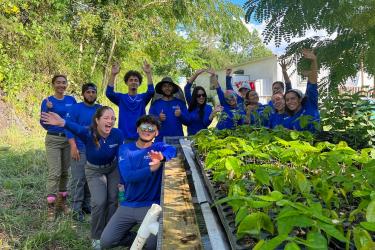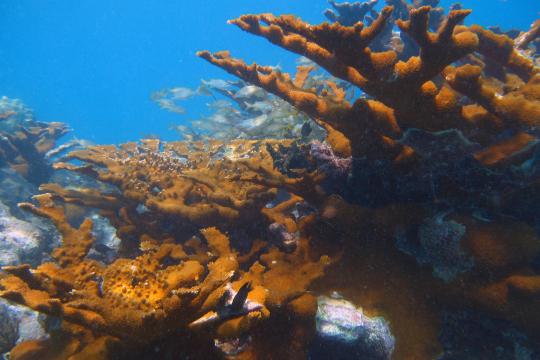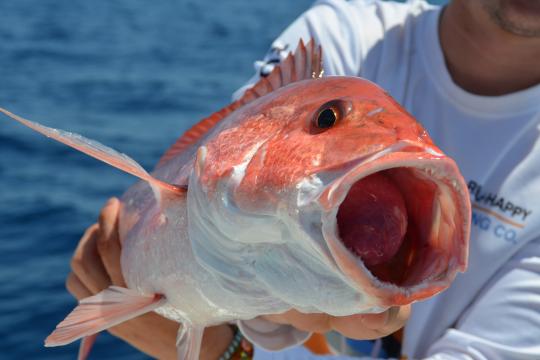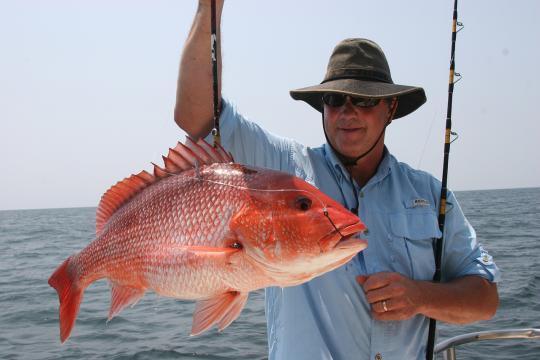KEY MESSAGE:
The public comment period has been extended for review of a draft environmental impact statement for Amendment 9 to the Fishery Management Plan for Coral and Coral Reef Resources of the Gulf of Mexico. The original comment period was set to end July 5, 2018, one day after the July 4 holiday. To provide adequate time for review, NOAA Fisheries requested the comment period be extended by 15 days to close on July 20, 2018. The Environmental Protection Agency announced the extended availability of the draft environmental impact statement on June 22, 2018 (83 FR 29115).
The Gulf of Mexico Fishery Management Council (Council) is considering an action to establish 13 new habitat areas of particular concern (HAPC) with fishing regulations, establish 8 new HAPCs without fishing regulations, and prohibit dredge fishing in all HAPCs with fishing regulations in the Gulf of Mexico (Gulf).
SUMMARY OF PROPOSED CHANGES:
For the proposed changes below, except where otherwise stated, bottom-tending gear is defined as: bottom longline, bottom trawl, buoy gear, dredge, pot or trap, and bottom anchoring by fishing vessels. Buoy gear does not refer to highly migratory species buoy gear, which is not a bottom-tending gear.
- Establish the following areas as HACPs with regulations prohibiting fishing with bottom tending gear: West Florida Wall, Alabama Alps, L&W Pinnacles, Scamp Reef, Mississippi Canyon 118, Roughtongue Reef, Viosca Knoll 826, Green Canyon 852, and AT 357.
- Establish Viosca Knoll 862/906 as an HAPC with regulations prohibiting fishing with bottom tending gear, but allow royal red shrimp fisherman to keep their nets in the water in this area.
- Within the current Pulley Ridge HAPC, establish a new HAPC with fishing regulations prohibiting all fishing with bottom tending gear, except for long line gear.
- Establish the following areas as HAPCs without fishing regulation: Harte Bank, Southern Bank, South Reed; Garden Banks 299 and 535; Green Canyon 140, 272,234, and 354; Mississippi Canyon 751 and 885.
- An interactive map of existing and proposed areas can be found online at http://portal.gulfcouncil.org/coralhapc.html.
REQUEST FOR COMMENT:
NOAA Fisheries must receive comments on this draft environmental impact statement no later than July 20, 2018. You may obtain electronic copies of the draft amendment and environmental impact statement from the NOAA Fisheries Web site.
HOW TO COMMENT:
The comment period is open now through July 20, 2018. You may submit comments by electronic submission or by postal mail. Comments sent by any other method (such as e-mail), to any other address or individual, or received after the end of the comment period, may not be considered by NOAA Fisheries.
Electronic Submissions: Submit all electronic public comments via the Federal e-Rulemaking Portal.
1. Go to: http://www.regulations.gov/#!docketDetail;D=NOAA-NMFS-2017-0146.
2. Click the "Comment Now!" icon, complete the required fields.
3. Enter or attach your comments.
Mail: Submit written comments to Lauren Waters, Southeast Regional Office, NMFS, 263 13th Avenue South, St. Petersburg, FL 33701.
FREQUENTLY ASKED QUESTIONS (FAQs)
What is essential fish habitat (EFH) and a habitat areas of particular concern (HAPC)?
- EFH are those waters and substrate necessary to fish (including coral) for spawning, breeding, feeding, or growth to maturity.
- HAPCs are a subset of EFH that meets one or more of the following criteria: 1) importance of ecological function provided by the habitat; 2) area or habitat is sensitive to human induced degradation; 3) the habitat is stressed; 4) is considered rare.
Why are these measures necessary?
- Corals and coral habitat meet the criteria as HAPCs because they are especially sensitive to human-induced degradation by fishing and non-fishing activities.
- Each fishery management plan must minimize adverse effects to EFH caused by fishing. Designating these areas as HAPCs helps identify these areas as important to protect and manage regarding fishing impacts.
- This amendment would protect coral species and essential fish habitat and maintain suitable marine fishery habitat quality and quantity to support sustainable fisheries.
How were the areas chosen?
- In 2014, the Council convened a working group of scientists to discuss which areas in the Gulf may warrant more specific coral protection. The group identified 47 areas. The Council’s Special Coral Scientific and Statistical Committee, Coral Advisory Panel (AP), Shrimp AP, Reef Fish AP, Spiny Lobster AP, Law Enforcement Technical Committee, members of the shrimping community, including royal red shrimp fishermen, and bottom longline fishermen, met throughout 2015 and 2016 to review and provide input on the recommended areas resulting in identifying 15 priority areas to have fishing regulations.
- This amendment would protect coral species and essential fish habitat and maintain suitable marine fishery habitat quality and quantity to support sustainable fisheries.
What is an environmental impact statement?
- The National Environmental Policy Act requires an assessment of the environmental impacts associated with a regulatory action. An environmental impact statement is developed if there is the potential for the actions to be significantly beneficial or impactful to the natural or human environment.
- This draft environmental impact statement analyzes the impacts of a reasonable range of alternatives.
Where can I find more information on Coral Amendment 9?
- Amendment 9 may be found online at the NOAA Fisheries Southeast Regional Office Web site.
- Contact NOAA Fisheries, Southeast Regional Office
By Mail: Lauren Waters
NOAA Fisheries, Southeast Regional Office
Sustainable Fisheries Division
263 13th Avenue South
St. Petersburg, Florida 33701-5505
By Phone: (727) 824-5305
SIGN UP FOR TEXT MESSAGE ALERTS - FIND OUT ABOUT IMMEDIATE OPENINGS AND CLOSURES
NOAA's Text Message Alert Program allows you to receive important fishery related alerts via text message (SMS). Standard message & data rates may apply. You may opt-out at any time.
Text alerts you may receive include:
- Immediate fishery openings and closures
- Any significant changes to fishing regulations that happen quickly
Sign up for one or more of the following groups:
- Gulf of Mexico Recreational Fisheries Related Alerts
- Text GULFRECFISH to 888777
- Gulf of Mexico Commercial Fisheries Related Alerts
- Text GULFCOMMFISH to 888777
- South Atlantic Recreational Fisheries Related Alerts
- Text SATLRECFISH to 888777
- South Atlantic Commercial Fisheries Related Alerts
- Text SATLCOMMFISH to 888777
- Caribbean Fisheries Related Alerts
- Text CARIBFISH to 888777
Other contacts:
Media: Kim Amendola, 727-551-5707
Allison Garrett, 727-551-5750
Join us every other Friday on NOAA Fish Instagram for Rec Fish Friday!
